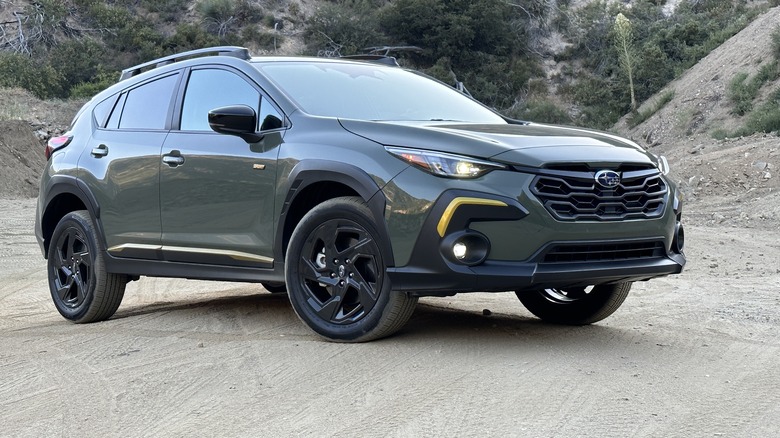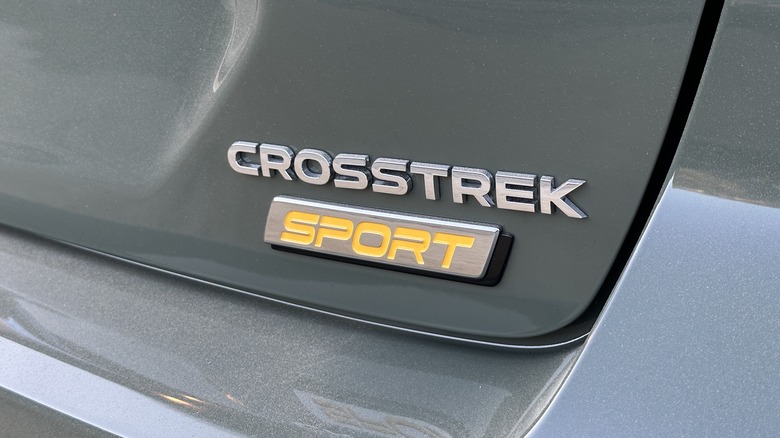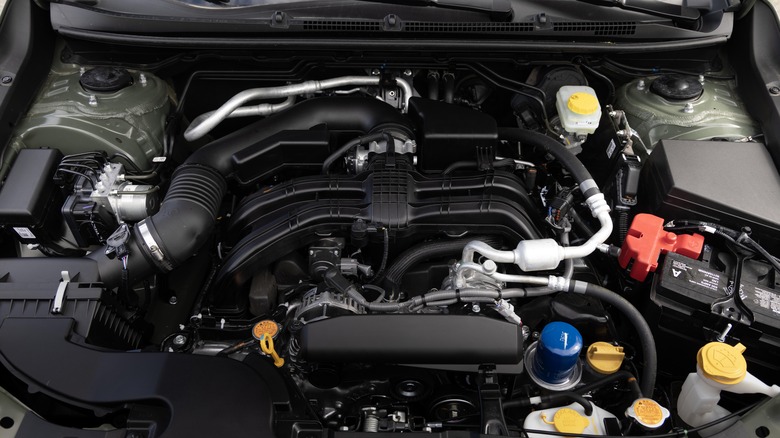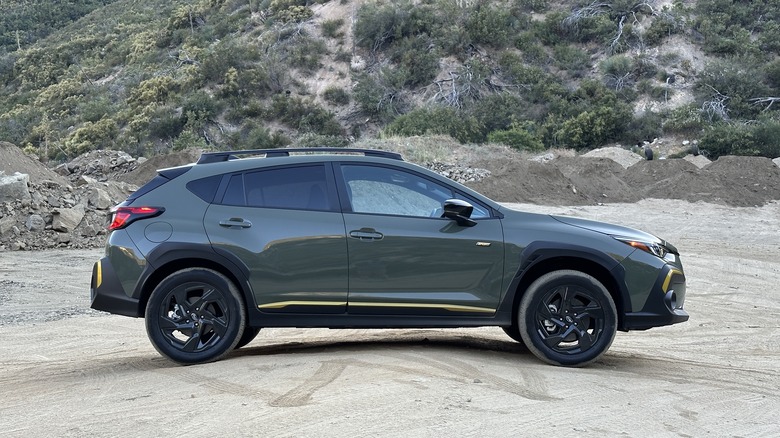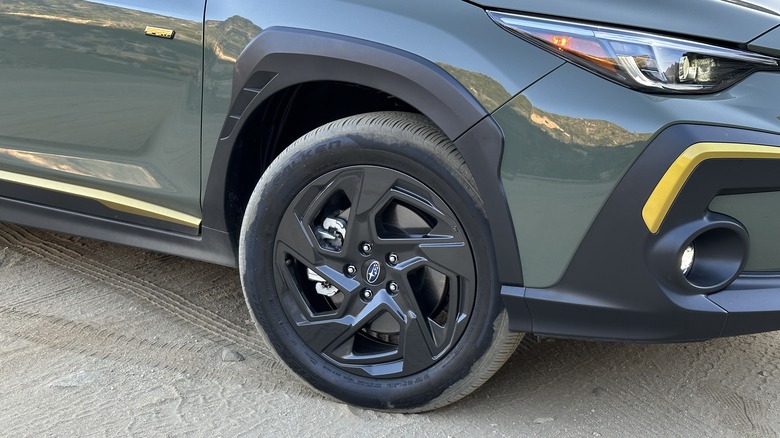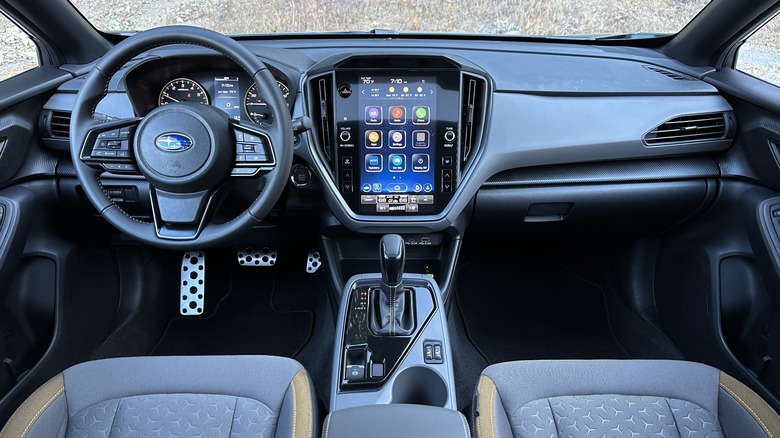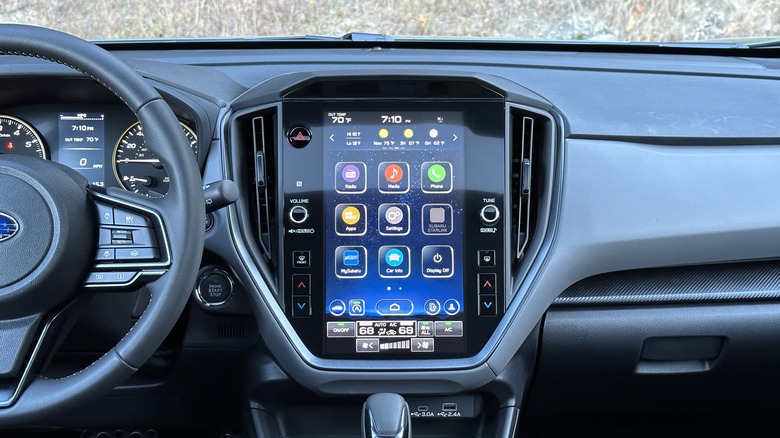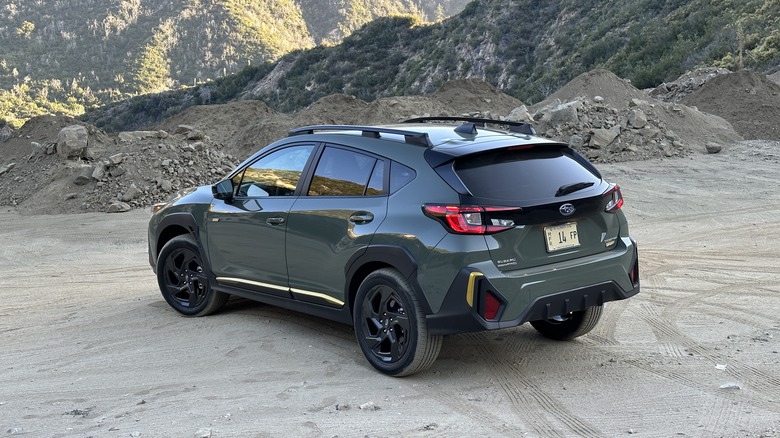2024 Subaru Crosstrek Sport Review: Rugged Little SUV Gets More Of The Good Stuff
- More powerful and refined 2.5-liter engine
- Enhanced off-road capability
- Neat little styling flourishes
- Some driver-assistance tech still costs extra
- Large multimedia screen houses dated software
- Base stereo stinks
The best thing about the 2024 Subaru Crosstrek is that it's more or less the same as it ever was. All of the new Crosstrek's changes were the direct result of customer feedback, and because of this, sales of the compact crossover are still super strong. Through June of this year, the Crosstrek was Subaru's second-best-selling vehicle, behind the always-on-top Outback wagon. And now that the new Crosstrek Sport and Limited models are ready and raring to go, that momentum is only poised to get stronger.
A quick refresher: Subaru launched the third-generation Crosstrek earlier this year in Base and Premium trims, powered by a 2.0-liter naturally aspirated flat-4 engine. The Sport and Limited, which are now arriving at dealers, have a 2.5-liter engine, but more importantly, are built in a separate plant. Base and Premium Crosstreks come from Gunma, Japan, while Sport and Limited versions are born in Lafayette, Indiana. Production timing for the two engine variants was staggered slightly, but now, all four trim levels are alive and well. A fifth variant, the ready-to-get-dirty Crosstrek Wilderness, arrives later this year.
What makes a Sport, a Sport?
Well, aside from the engine — which I'll get to in a moment — the Crosstrek Sport is most obviously set apart by its yellow exterior accents. They look neat, especially with my tester's $395 Alpine Green paint. The whole look is very apt; this is the, uh, most Crosstrek-y Crosstrek.
Sport and Limited models ride on 18-inch wheels, as opposed to the Base and Premium's 17-inch alloys, wrapped in 255/50 Falken Ziex all-season tires. The Sport also has a dual-mode version of Subaru's X-Mode off-road tech, which adds Snow/Dirt and Deep Snow/Mud programs that alter the throttle response, all-wheel-drive system, and traction control.
The Crosstrek Sport starts at $30,290, including $1,295 for destination, making it $2,850 more expensive than the 2.0-liter Premium, but only $1,900 cheaper than the top-trim Limited. With the aforementioned paint job and a $1,920 package that includes blind-spot detection, rear cross-traffic alert, a moonroof and power driver's seat, my tester comes out to $32,605 all-in. That's not a bad price for this little guy.
More power, same vibe
Obviously, the big news about the Crosstrek Sport is the 2.5-liter engine, but really, it's not the star of the show. Sure, the larger flat-4's 182 horsepower and 172 pound-feet of torque are a nice upgrade over the 2.0-liter's 152 hp and 145 lb-ft, but not so much that it radically changes the Crosstrek's on-road character. This thing is still kind of pokey, especially when getting up to highway speeds, and you'll want to make use of Sport mode — that's the "S" button on the steering wheel — to keep the continuously variable transmission humming in the heart of the engine's power band.
But here's some good news: Opting for the larger engine doesn't come with a major efficiency penalty. According to the EPA, the Crosstrek Sport and Limited should return 26 mpg city, 33 mpg highway, and 29 mpg combined. Those are only 1-mpg decreases from the 2.0-liter engine's fuel economy numbers, and the 29 mpg combined spec is actually identical. In real-world driving, these numbers are easily achievable.
A solid little commuter
Despite the larger wheel-and-tire package, the Sport is just as nice to drive as other Crosstreks. Subaru really focused on ride comfort and compliance with this generation Crosstrek, and it shows. This SUV exhibits nicely controlled body motions and there's no harshness over bumps or rough pavement. Crucially, the 2024 Crosstrek feels like it'll be more pleasant to drive for longer distances down gravel or dirt roads, with a lot less shuddering and bouncing — and a lot less road and wind noise making its way into the cabin.
A new dual-pinion electric power steering system gives the Crosstrek more responsive turn-in than before, but this crossover is hardly sporty. Nevertheless, it's pleasant to drive day to day, with great visibility out the long windshield and throttle and brake pedal tuning that makes them smooth to modulate. There are no jumpy starts when pulling away from stoplights nor will you ever surprise yourself by accidentally applying too much brake pressure and inadvertently slamming to a stop. The Crosstrek's whole mantra is easy, effortless driving, and that's true no matter which engine is underhood. The 2.5 just gives you a teensy bit more oomph.
Go on, get it dirty
Folks looking to really press the Crosstrek into off-road duty will likely go hearts-for-eyes about the new Wilderness model, which — in addition to looking rad — packs genuine functionality through its increased ground clearance, all-terrain tires, and other meaningful upgrades. But that's not to say the Crosstrek Sport doesn't have solid chops in its own right, and if you're only planning to have light off-pavement adventures, this model might be all you really need.
The most important factor while driving off-road is ground clearance, and the Crosstrek Sport has plenty: 8.7 inches, which is better than the vast majority of new SUVs. That X-Mode tech really works, too, letting individual wheels get more or less power as needed and allowing the Crosstrek to scurry up steep, rutted hills. Honestly, the Crosstrek Sport is a good set of all-terrain tires away from down and dirty greatness. Considering how many adventure-ready upfitted Crosstreks I see running around Southern California, I bet the upcoming Wilderness is going to be a freakin' hit.
A durable interior
There isn't much about the Sport's interior that differentiates it from lesser Crosstreks, save for the unique cloth seats with cool stitching patterns and yellow accents. This same colorway is used on the door toppers, really rounding out the whole look.
Those cloth seats are heated, which is nice, though the high/low heating toggles feel two decades old, which is not so nice. A lot of the Crosstrek's cabin is clearly designed for function over form, meaning the plastics aren't the prettiest or best-feeling in the world, but they're bound to stand up to decades of abuse, and in a Subaru, that's what matters most.
That's also why the Crosstrek's cargo area isn't lined with cloth. Instead, there's a big rubber floormat that's easy to take out and hose down when it inevitably gets covered in sand, mud, slush, grass, mulch, dog barf, whatever. Fold the Crosstrek's back seats down and you've got 54.7 cubic feet of space to work with, which is pretty darn good. Too bad there's no power liftgate available.
Lots of tech, but some needs work
Every Crosstrek comes with Subaru's EyeSight suite of driver-assistance tech, so you've got forward-collision warning and adaptive cruise control no matter what. I do think it's weird that Subaru doesn't just throw in blind-spot monitoring and lane-keeping assist, since plenty of other automakers do. Only the most expensive Crosstrek Limited comes with the full list of driving aids standard. Subaru is synonymous with safety; why gatekeep this stuff?
Since the Sport sits above the Premium in the Crosstrek hierarchy, that means it gets Subaru's 11.6-inch vertically oriented multimedia display, which looks impressive at a glance, but in practice is somewhat problematic. The software is often sluggish on startup and the graphics are rudimentary. It's strange how only some of the climate controls are permanently displayed on the home screen, while others require you to open a separate page. But at least Apple CarPlay and Android Auto connect wirelessly, and take up the whole central space of the screen, so it looks nicely integrated. The Crosstrek Sport has a wireless charging pad and both USB-A and USB-C ports, so those Apples and Androids can stay fully juiced on the go.
2024 Subaru Crosstrek Sport verdict
Compared to a lower-spec Crosstrek Premium, the Sport is totally worth its $2,850 upcharge. You get a more powerful, more refined engine, a better wheel/tire combo, nicer cloth seats, and a more robust off-road driving system — plus, you know, yellow highlights. I'd actually stick with the Sport instead of the more expensive Limited, too, since the biggest selling points of the latter are leather upholstery and an optional Harman/Kardon audio system. Nice features, but hardly necessary on a rough-and-tumble vehicle like the Crosstrek.
Speaking of rough and tumble, that's one of the Crosstrek's biggest advantages over its competitors. The Jeep Compass and Renegade are probably the closest matches, but they're not as nice to drive day to day, and vehicles like the Hyundai Kona, Kia Seltos, and Mazda CX-30 are geared more toward city-slickers.
All of the new Crosstrek's best attributes are alive and well in the Sport, complemented by a more refined driving experience and slightly better off-the-beaten-path cred. If that sounds like a recipe for success, I assure you, it is.
